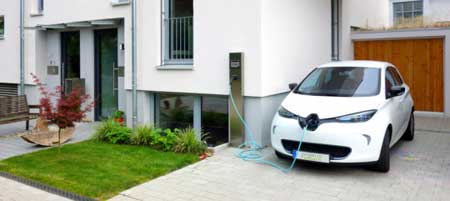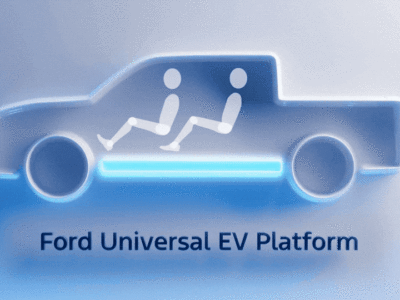A home energy management system created by Fraunhofer researchers incorporates electric vehicles into the household energy network and creates charging itineraries.
The house of the future is environmentally friendly, energy efficient and smart. Its inhabitants can utilize rooftop-generated PV energy not only for household consumption but also to charge their personal electric vehicle. This scenario has already become reality for a collection of row houses built according to the “Passive House” standard in the German city of Fellbach in Baden-Württemberg.
The group of new homes was upgraded as part of the “Fellbach ZeroPlus” project to include electromobility enhancements as well as a comprehensive energy management system. The initiative is sponsored by the German Federal Government’s “Electric Mobility Showcase” program.
Fast charging stations and home energy management
“The large photovoltaic systems on the rooftops of the houses provide more power than the inhabitants consume over the long term. Surplus power can be fed into the public grid as well as be used for charging the household electric vehicle,” explains Dominik Noeren, a scientist at the Fraunhofer Institute for Solar Energy Systems ISE in Freiburg. To efficiently incorporate electromobility enhancements into the daily routines of the households, Noeren and his team designed a 22 kW fast charging station as well as a home energy management system (HEMS) for five of the seven homes. The Java-based HEMS software runs on small computers known as embedded systems. The HEMS collects data from the various electricity meters in the house, including those for the photovoltaic system, the electric vehicle, the heat pump, and general household power. The system displays the various power flows and informs the homeowners about their current power consumption at any time of the day. “They can see how much power is coming from either the public grid or the household solar system, and they can see where it is going — to the heat pump, household appliances, or the electric vehicle,” says Noeren.
Furthermore, the HEMS also forecasts solar intensity over the next 20 hours or so and provides users with information on how much solar power is available. An adaptive algorithm also computes anticipated household power loads for each quarter hour. Using this data, it is possible to determine how much PV power is available for the electric vehicle at any given time. “Electricity from the PV first goes to the house, and power that is not consumed there is stored in the electric vehicle battery. If there is still any electricity left over after that, it is fed into the public electricity grid,” explains Noeren.
During two years of field testing, an Android application was created using feedback from the homeowners. The HEMS app provides a visualization of all processes and electricity flows in real time, and gives solar intensity forecast readouts in graphical and numerical form.
An adaptive algorithm works to optimize the use of the power generated by each household. Through the app, users can control the charging station as well as view the battery charge level and charging times of the electric vehicle. “These parameters are necessary in order to intelligently charge the electric vehicle,” says Noeren.
To create an ideal charging itinerary, the system must know the vehicle’s current battery charge level as well as its next planned departure time. The energy management system uses this information together with weather and consumption forecasts to estimate the flows through the household power network. It calculates how much electricity must be topped up, as well as which time periods are ideal for recharging the vehicle using the greatest possible proportion of household-produced solar energy.
“It is more cost effective to consume the self-generated solar electricity than to feed it into the public electricity grid,” says Noeren.
The HEMS system helps consumers use data on driving times, solar intensity forecasts and current household energy consumption to synchronize electric vehicle charging times with rooftop energy production, so they can maximize the proportion of household-produced energy they use.
This not only helps homeowners lower their costs, but it also goes a step closer towards realizing the ideal of low-CO2 homes and personal mobility. Maximizing the proportion of household-produced energy consumed helps unburden the public power grid while reducing household feed-in peaks to the grid.
The HEMS system is based on the Fraunhofer openMUC framework, which supports a wide variety of meters and devices. It offers modular expandability for integrating devices such as wireless Bluetooth or WLAN power outlets that can remotely activate and deactivate household appliances, or for integrating high-consumption items such as heat pumps.
Two of the five households in the “Fellbach ZeroPlus” project have been successfully using a car-sharing variant of the system as part of a field test since mid-2014.
Reference(s):
Story: Solar vehicle charging at home | Fraunhofer-Gesellschaft — November 4, 2015












Comments